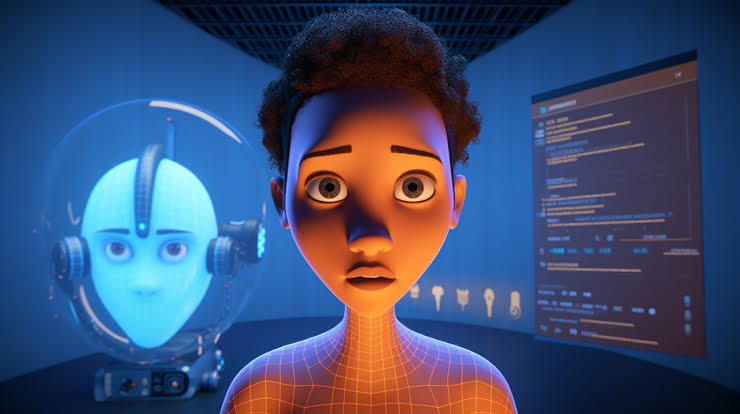Discover how artificial intelligence is transforming the animation industry by automating production tasks, enhancing content creation, and personalizing viewer experiences. Explore the future of animation and the exciting possibilities AI brings to creativity and storytelling.
Animation has long been field defined by creativity imagination and meticulous craftsmanship. From early days of hand-drawn cartoons to sophisticated 3D renderings of today, animation industry has continually evolved to embrace new technologies and techniques. One of most transformative forces currently shaping industry is artificial intelligence (AI). AI’s impact on animation is profound. It influences everything from content creation and character design to production efficiency and audience engagement. As we look toward future AI promises to revolutionize animation in ways that were previously unimaginable. It opens up new possibilities and redefines boundaries of what can be achieved in this vibrant field
AI-Driven Animation Tools and Software
AI has introduced range of new tools and software transforming animation process. Traditionally animation required extensive manual work including frame-by-frame drawing, meticulous character rigging and time-consuming rendering. However AI-powered tools are streamlining many of these tasks. This makes animation process faster and more efficient.
One significant advancement is use of AI for automating in-between frames, a technique known as "in-betweening" or "tweening." In traditional animation artists create key frames. They manually draw intermediate frames to ensure smooth motion. AI algorithms can now analyze key frames. They generate intermediate frames automatically, reducing amount of manual work required.
Another area where AI is making impact is in character animation and motion capture. AI-driven tools can analyze motion capture data and apply it to digital characters. This creates more realistic and fluid movements. These tools can also enhance accuracy of facial expressions and body language. This makes animated characters more lifelike and expressive.
AI and Content Generation
AI is not only revolutionizing technical aspects of animation but also influencing content creation. AI algorithms analyze vast amounts of data. They identify trends predict audience preferences and generate content that aligns with these insights. This data-driven approach allows creators to tailor their content to specific audiences and improve engagement.
Generative design is one such AI application that is changing how animated content is created. AI algorithms generate unique designs and visual elements based on predefined parameters. This allows animators to explore new creative possibilities. For instance, AI can create diverse character designs backgrounds and visual effects. This provides animators with a broader range of options and reduces time spent on design work.
AI is also enabling creation of adaptive and interactive content. Interactive animations, such as those used in video games or virtual reality experiences can benefit from AI’s ability to respond to user input and adjust content dynamically. This allows for more immersive and personalized experiences as AI can adapt animations in real time based on user interactions
Enhancing Storytelling with AI
Storytelling is at heart of animation. AI is offering new ways to enhance narrative development. AI algorithms can analyze scripts storylines and audience feedback. They provide insights and recommendations for improving narratives. By understanding patterns in successful stories and audience preferences, AI can help creators refine plots dialogue and character arcs.
AI can also assist in scriptwriting and dialogue generation. Natural language processing algorithms can generate dialogue based on character personalities and story context. This helps writers craft more compelling and authentic conversations. Additionally, AI tools can assist in generating storyboards and animatics. They allow creators to visualize their stories and make adjustments before full-scale production begins.
Personalization and Audience Engagement
Personalization is becoming increasingly important in entertainment. AI is playing key role in enhancing audience engagement. By analyzing user data and preferences AI can tailor animated content to individual tastes. This creates a more personalized viewing experience.
Streaming platforms and content providers leverage AI to recommend animated content based on user viewing history and preferences. AI algorithms suggest new shows, movies or series that align with user’s interests. This improves content discovery and engagement. Personalized approach not only enhances viewer experience but also helps content creators reach target audiences more effectively.
In addition to content recommendations, AI can also create personalized interactive experiences. For example AI-driven chatbots and virtual characters engage with users in real-time. This provides a more immersive and interactive experience. These AI-powered interactions integrate into various platforms, including websites apps and social media. This allows for dynamic and engaging content
Challenges and Ethical Considerations
While AI offers numerous benefits to animation industry it also presents challenges and ethical considerations. One major concern is potential impact on employment. As AI tools automate various aspects of animation production, there is possibility that some traditional roles may become less relevant. It is important for industry to address these concerns. Investing in upskilling and reskilling programs is necessary to ensure animators and other professionals can adapt to new technologies.
Another consideration is ethical use of AI in content creation. AI-generated content raises questions about originality and authorship. As AI algorithms generate designs stories and animations, it becomes crucial to define and address issues related to intellectual property and creative ownership. Ensuring transparency is key. Establishing guidelines for ethical use of AI in animation is essential for maintaining integrity and creativity of industry.
The Future Outlook
Looking ahead future of animation with AI is both exciting and transformative. As AI technology continues to advance, we can expect even greater innovations in animation production. Storytelling and audience engagement will also improve. Integration of AI into animation workflows promises to enhance creativity and improve efficiency. It can provide new ways for audiences to interact with animated content.
To fully realize potential of AI in animation collaboration between technologists, animators and storytellers will be crucial. By working together these stakeholders can harness power of AI. This can push boundaries of animation. It can create compelling, innovative content that resonates with audiences around world.
